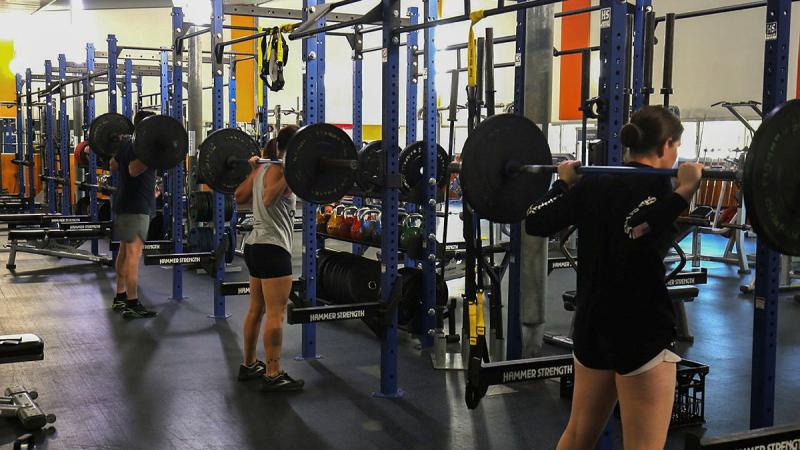Australia’s farmers are expected to plant 23.55 million hectares to winter crops this year – up more than three per cent on 2023 – despite a mixed start to the season across the country, Rabobank says in its 2024/25 Australian Winter Crop Outlook.
The specialist agribusiness bank says the increase in planting is driven by a positive outlook for New South Wales and Queensland and overall better margins year-on-year.
However, while overall planting is projected to be up, total Australian production of grains and oilseeds for 2024/25 will be very much contingent on the expected onset of a late-season La Niña weather pattern in the second half of the year, according to report author, RaboResearch analyst Vitor Pistoia.
“It’s currently a ‘tale of two coasts’, at least for the season’s start,” he said, “with strong early sowing in the east, but a dry start in the west.”
The bank expects total crop production to be near average for the 2024/25 winter season on the back of the forecast La Niña and the dry start in the west as well as parts of South Australia and Victoria.
“Assuming a tough start for Western Australia, South Australia and western Victoria, with a mid-to-late season recovery following better rainfall due to La Niña, we forecast overall production for winter crops will reach 46.3 million tonnes,” Mr Pistoia said.
Planting – ‘Wheat surges’
Canola, however, is set to lose ground – projected to shrink 12.7 per cent (450,000 hectares) to 3.11 million hectares, due to dry conditions in Western Australia and South Australia as well as potential lower gross margins compared with previous seasons.
This would see wheat acreage at 6.9 per cent above the five-year average and canola still at 5.1 per cent above its five-year average despite the acreage decline.
Barley will likely take second place in the expansion this year, the report said, with an estimated 5.1 per cent (210,000 hectare) rise on last year’s planting to 4.33 million hectares. This, however, would be 10.3 per cent below the five-year average.
“Oats will likely show a minimal uptick of 12,000 hectares to a total of 0.7 million hectares, while planting intentions for pulses suggest acreage growth of 5.2 per cent year-on-year to 1.93 million hectares,” Mr Pistoia said.
Production
For 2024/25 grain and oilseeds production, the bank’s ‘base case’ total winter crop forecast of 46.3 million tonnes comprises 27.4 million tonnes of wheat (projected to be up 5.7 per cent on the previous year).
Rabobank said barley production is forecast to come in at 10.0 million tonnes (down 7.2 per cent on last year), while canola volumes are projected to be down 11.4 per cent to 5.0 million tonnes.
Oats and pulses were also expected to “lose tonnage” this year, according to the report – oat production forecast to drop 6.1 per cent on the previous season to 0.96 million tonnes and pulses down 10.8 per cent to 2.8 million tonnes.
Mr Pistoia said the “skewed trend away from other crops” reflected the significant expansion projected for wheat area planting this season.
States
Despite the dry start to the season in WA and some other parts of the country, crop plantings were projected to be up or remain relatively steady in every state this year, Rabobank said.
“Despite a delay in the season’s break, Western Australia is on track to increase its cropping area by 3.2 per cent from last season to 8.905 million hectares,” Mr Pistoia said. “Crop margins are in a better position compared with last year and paddocks that went fallow will re-enter cropping programs.”
New South Wales’s cropping area is projected to increase 3.5 per cent on last year to 5.712 million hectares, with renewed optimism in the northern part of the state due to improved soil moisture levels.
Meanwhile, Queensland’s crop planting intentions have “rocketed” and show the biggest year-on-year area increase in the country – up 31.7 per cent to 1.475 million hectares. And Queensland’s wheat area is on track to be the largest on record for the state, Rabobank said, with pulse area to increase 17 per cent.
“Summer and early autumn rainfall was above the historical mean for the state, which bolstered Queensland growers’ confidence and cropping intentions,” Mr Pistoia said.
In Victoria, planted area is forecast to remain steady at 3.541 million hectares – albeit down marginally (by 0.1 per cent) on the previous season. This, however, would still represent the second biggest winter area ever cropped in the state, Mr Pistoia said, and just 1.4 per cent under the 2020/21 record.
Winter cropping area is also poised to remain relatively stable year-on-year in South Australia, Rabobank said, although with a significant drop in canola planted but an increase in pulses. The state’s total crop planting is projected to increase 0.1 per cent on the previous season to 3.916 million hectares.
Price outlook
Grain prices are likely to ‘hold firm’ in the year ahead, the Rabobank outlook says.
The 2024/25 season is likely to mark the fifth consecutive season of dwindling global ending stocks for wheat, Mr Pistoia said. “Dry weather and frost in the Black Sea region has tilted the supply and demand balance for wheat towards a positive price cycle.”
Rabobank forecasts APW (Australian Premium White) port prices for wheat to range between AUD 360 and AUD 390 per tonne by the harvest time – to be adjusted by global weather impacts on wheat production. This would be eight to 12 per cent less than prices on December 1, 2023, Mr Pistoia said.
For barley, prices are likely to be sustained by improved cattle prices and red meat export opportunities. The report says prices during harvest time for feed barley are on track to be in the AUD 350 to AUD 370 per tonne range for east coast ports and AUD 320 to AUD 340 per tonne for Western Australia and South Australia.
“The price difference is due to WA and SA’s larger barley export profile, which means barley from these states will be competing with cheaper corn on global markets,” Mr Pistoia said.
Australia’s malt barley premiums remain the weakest of all the major barley exports, the report says, due to soft demand from maltsters in Australia’s key South-East Asian export markets. “Therefore barley industry drivers are currently heavily entwined in the feed market and the livestock sector’s future,” Mr Pistoia said.
For canola, the reduction in Australian supply should boost prices, with global ending stocks poised to decline year on year.
“This means Australian non-GM canola port prices could range between AUD 680 and AUD 720 per tonne at the next harvest, with Western Australia figuring in the top range due to its comparatively shorter transit time to South-East Asia and Europe,” Mr Pistoia said.
Exports
Based on the bank’s ‘base case’ production forecast – and not including carryover stocks from previous seasons – Australia is expected to export 19.8 million tonnes of wheat, 3.9 million tonnes of barley and 3.6 million tonnes of canola from the 2024/25 winter crop harvest.
Current higher freight rates for exports – due, in large part, to the ongoing Houthi attacks in the Red Sea “shattering” global trade routes – have potential to ease by the end of the year, Mr Pistoia said.
“All else being equal, by the end of the year, freight rates have room to become a little softer as risk premiums fade,” he said. “Unfortunately though, trade wars, tariffs and sanctions are key topics for 2024, so volatility is almost certain.”








